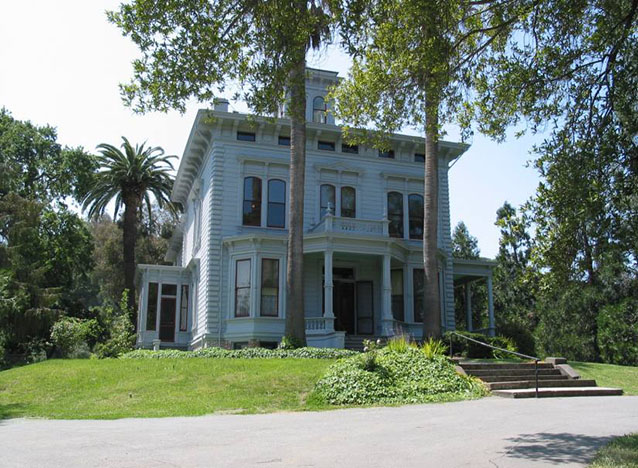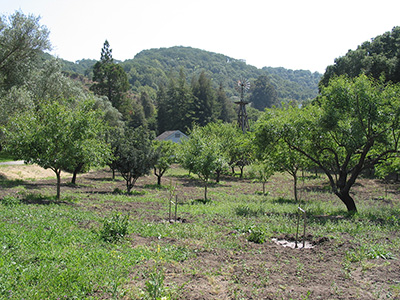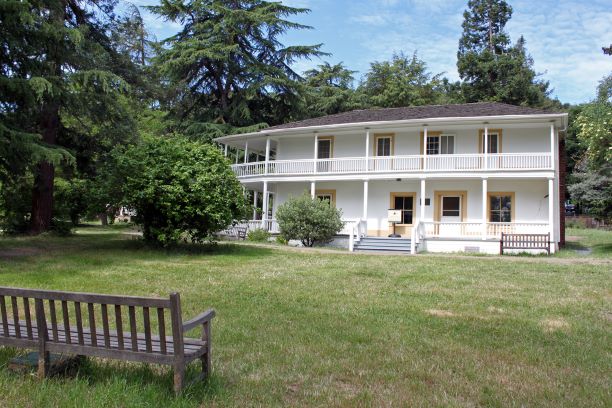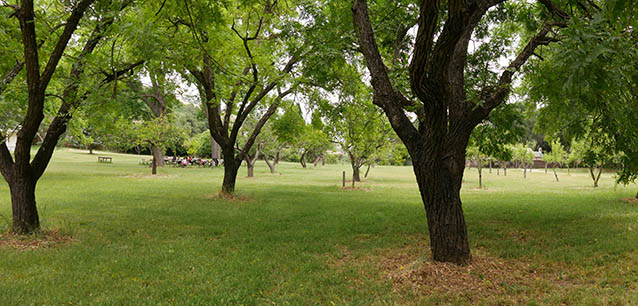The John Muir National Historic Site consists of the remaining 336 acres of the Strentzel-Muir fruit ranch. The historic site is located near Martinez within the Alhambra Valley, characterized by the Alhambra Creek watershed to the southeast and the Franklin Creek watershed to the northwest. The loam and clay loam soils provided agricultural land for the orchards and gardens developed by John Muir and Muir's father-in-law Dr. Strentzel.
“[I hold] dearly cherished memories about…the fine garden grounds full of trees and bushes and flowers that my wife and father-in-law planted – fine things from every land." John Muir

NPS

NPS
The John Muir National Historic Site is historically significant for its connection to the Conservation Movement, its association with John Muir, and the Victorian Italianate architecture of the Muir House. It is a nationally significant site in areas of conservation, social/humanitarian concerns, literature, and science. These areas were specifically linked to John Muir and his extensive efforts to establish national parks and to bring his environmental experiences to the public through his writing.
On August 31, 1964, the John Muir National Historic Site was authorized “as a public national memorial to John Muir in recognition of his efforts as a conservationist and a crusader for national parks and reservations" (General Management Plan and Environmental Assessment 1991: Appendix 1). The establishment of the park at this time was fortunate, as most of the land surrounding the park was developed, or soon to be developed, with homes, businesses, and roads.
John Muir is reconized for his conservation work with other leaders to save Hetch Hetchy and establish Forest Reserves (which served as the foundation for the U.S. Forest Service) and his influence on Theodore Roosevelt, which led to the establishment of five National Park Service, twenty three national monuments, and 148 million acres of National Forest. Muir believed that natural resources should be protected for their intrinsic spiritual and aesthetic values, and that they should be strictly and wisely managed to benefit society through sound forestry, soil conservation, and cultivation of landscape beauty.

NPS
The Strentzel-Muir Ranch appears today much as it did during the period of significance of 1849 to 1914, when the site was initially laid out and occupied by the Strentzel and Muir families. This period encompasses the construction of key landscape features such as the Martinez Adobe, Muir House, Carriage House, orchards, roads, and vegetation.
The Muir House was recognized as one of the few remaining significant examples of a Victorian Italianate country house that was popular among the more prosperous families in this part of California. Situated on a knoll east of the Martinez Adobe, the two-story, Victorian Italianate-style house featured fourteen rooms, porches, an attic, and a cupola that offered sweeping views of the vast Alhambra Valley spread out below. In the Victorian tradition, the house was surrounded by a diverse palette of native and exotic trees, shrubs, and flowers, many of which were brought back by Muir on his travels. Over time, the trees matured and individual plants merged with others to create a lush and verdant scene. The Victorian characteristics are still evident today, although many of the historic trees have matured to a point where they are out of scale with the other plantings. Natural growth of plants has diminished the distinction between historic and non-historic trees. Overall, the plantings are routinely pruned and trimmed and lawns are regularly mowed. Such activities may have been performed during later years of the historic period,as the grounds were maintained by ranch workers during Muir’s many absences.

NPS
Quick Facts
- Cultural Landscape Type: Historic Site
- National Register Significance Level: National
- National Register Significance Criteria: A, B, C
- National Historic Landmark
- Period of Significance: 1849 - 1914
Landscape Links
- Cultural Landscape Inventory park report
- Preserving a "Big Tree" - A story of the giant sequoia at John Muir National Historic Site
- Library of Congress: American Memory Collection
- National Register of Historic Places: John Muir National Historic Site
- NPGallery Photos
- Landscape Photo Album (Flickr)
- More about NPS Cultural Landscapes
Last updated: January 6, 2020
